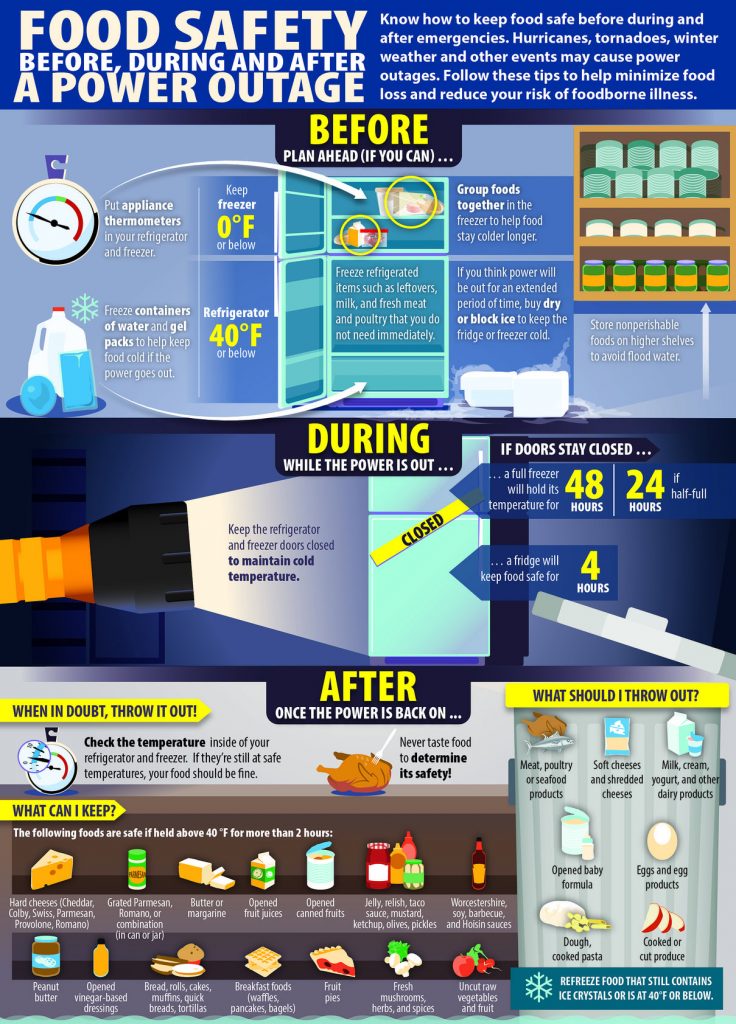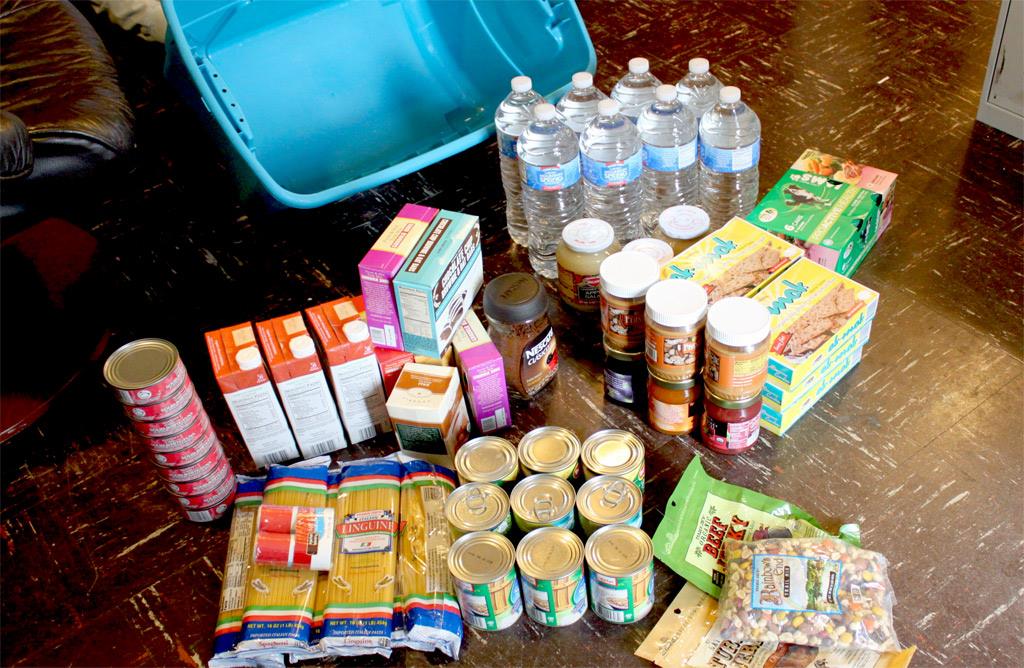When the electricity goes out, many people wonder if they can still eat what was left in their refrigerator or freezer.
Your refrigerator will keep food cold for about 4 hours if the doors stay closed, and a full freezer will maintain its temperature for approximately 48 hours. When in doubt, throw it out.
Knowing how to keep food safe before a loss of power – and to determine if food is safe after a loss of power – will help minimize the loss of food and reduce the risk of foodborne illness.



Food Safety for Short Power Outages
If your power has gone out recently, the USDA recommends some steps to take:
- Avoid opening the fridge and freezer doors unless you need to. If kept closed, the food will stay cold for longer — a shut refrigerator will keep food cold for about four hours while a full freezer will hold its temperature for about 48 hours (24 hours if half-full).
- Place meat and poultry to one side of the freezer or on a tray. This helps prevent cross contamination of thawing juices.
- Learn about proper hygiene, cross contamination, cold and hot food safety, foodborne pathogens, and best practices to prevent foodborne illness.
- Food Manager Training & ANSI Certification - $99.00
- Food Handler Training - only $7.00!
- HACCP Training: 16hr/4hr/1hr
- Food Allergy Training - $15.00
- Enter Promo "train10off" at Checkout
- Use dry or block ice to keep the refrigerator as cold as possible. Fifty pounds of dry ice should keep a fully-stocked 18-cubic-feet freezer cold for two days.
- Food Cooler. Coolers filled with ice can preserve food slightly longer during a power outage.
- Food Thermometer. Having a digital thermometer to check the internal temperatures of food ensures they’re cold enough to use safely.


Food Safety When Power Comes Back On
Before you eat any food in the fridge or freezer, here are some guidelines to make sure it’s still safe:
- Check the temperature inside of your refrigerator and freezer. Discard any perishable food (things like meat, poultry, seafood, eggs or leftovers) that has been above 40°F for two hours or more.
- Toss any food that has an unusual odor, color or texture or feels warm to the touch. You’ll want to check each item individually for this.
- Check frozen food for ice crystals. The food in your freezer that partially or completely thawed out may be safely refrozen if it still contains ice crystals or is 40°F or below.
- Never taste food to decide if it’s safe. If you’re unsure, just toss it.The most important thing to remember is: when in doubt, throw it out. Otherwise, you and your family could get really sick, and you’ve certainly got enough to worry about and deal with after a natural disaster.
Prepare an Emergency Food Supply
Food and water may not be safe drink during and after natural or weather emergency. If an emergency or disaster strikes your community, you might not have access to food, water, and electricity for days or even weeks.



Make a plan with the necessary food, water, and items to get you through the various types of emergencies for your locale. Disasters don’t plan ahead. But you can.
Pan to have at least a 3-day supply of food on hand. Keep foods that:
- Have a long storage life
- Require little or no cooking, water, or refrigeration, in case utilities are disrupted
- Meet the needs of babies or other family members who are on special diets
- Meet pets’ needs
- Are not very salty or spicy, as these foods increase the need for drinking water, which may be in short supply
- Best Rated Emergency and Disaster Preparedness Survival Kits - Powered by Amazon®.
- Emergency Disaster Survival Kit for all situations. Equipped with top survival items. FEMA Compliant Kits.
- Best selection and deals! Free 2-Day Shipping with Amazon Prime.
Summary
Knowing how to keep food safe before a loss of power – and to determine if food is safe after a loss of power – will help minimize the loss of food and reduce the risk of foodborne illness.






